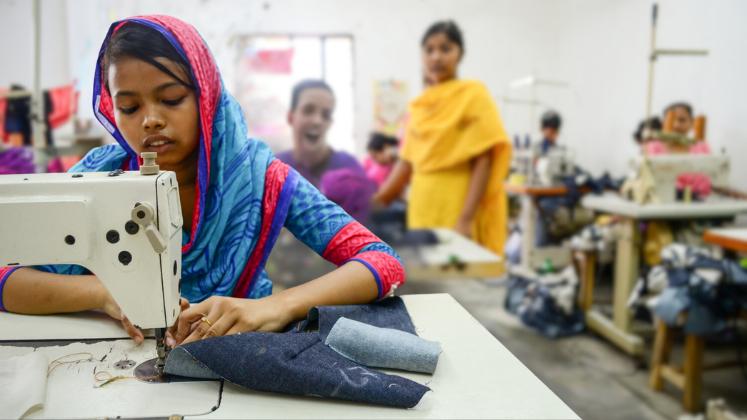
The National Child Labour Survey 2022 estimates that there are 3.54 million working children in Bangladesh, aged 5 to 17, of which 1.76 million are not engaged in child labour and 1.78 million are, including 1.07 million who work in hazardous positions.
This was disclosed during the Report Dissemination Programme of Establishment Based Sector-wise Working Children Survey-2023 and National Child Labour Survey-2022 at the Bangladesh Bureau of Statistics (BBS) auditorium in the Agargaon neighbourhood of the city.
The chief guest at the programme was State Minister for Planning Md. Shahiduzzaman Sarker, while the special guest speaker was Dr. Shahnaz Arefin, Secretary of the Statistics and Informatics Division.
The guests of honour were Matt Cannell, the deputy high commissioner of the British High Commission, and Tuomo Poutiainen, the country director of ILO.
30,816 households in 64 districts—selected through the 2022 Population and Housing Census—were included in the National Child Labour survey. There are 80–120 dwellings in the Enumeration Area (EA). Eight divisions and the rural and urban domains made up the survey. There were five modules in the questionnaire, with a major emphasis on the issue of child labour.
The report stated that the total child population in this 5-17 age group is 39.96 million, with 55.2 per cent belonging to the age group of 5 to 11 years. Out of the entire child population, 3.54 million are working children.
The report also highlights the distribution of the child population in different divisions, with Dhaka having the highest proportion of children. The number of households with children in this age group is 27.63 million, and the current school attendance rate is 34.81 per cent.
It said out of 27.63 million households, 3.54 million of them have working children between the ages of 5 to 17. Working children are employed in various sectors including agriculture, manufacturing, construction, wholesale, retail, and transport. Some 60.8% of them are employees and 99 per cent of them are informally employed. Some 60.7 per cent of working children currently attend school. The average working hours of the child workers are 27.1 hours per week, and their average monthly income is TK 6661.
The report highlights that 82 per cent of child labourers live in their own homes, with 33.3 per cent employed in manufacturing and 23.6 per cent in agriculture, forestry, and fishing. Overall, 68.8 per cent of child labourers are categorised as employees with 52.2 per cent attending school. The average monthly income of child labourers is TK 6675.
It said 7 per cent of these children work with heavy loads sharp tools, and during nighttime hours.
In addition, there are 2.01 million child domestic workers who are not paid and 0.08 million who are paid, with females outnumbering males in both categories. The three primary sectors agriculture, industry, and service, employ 1.07 million, 1.19 million and 1.27 million child workers, respectively.
The government officially recognised and labeled 43 sectors as hazardous. Following consultations with various stakeholders, the Bangladesh Bureau of Statistics has selected five sectors from this government-declared hazardous list for conducting the ‘Establishment Based Sector Wise Working Children Survey-2023’.
According to the estimated results of the survey, there are 40,525 establishments and 38,008 children 5-17 years old working in the aforementioned sectors. Among all the children working in these hazardous sectors, 97.5 per cent are boys and 2.5 per cent are girls.






